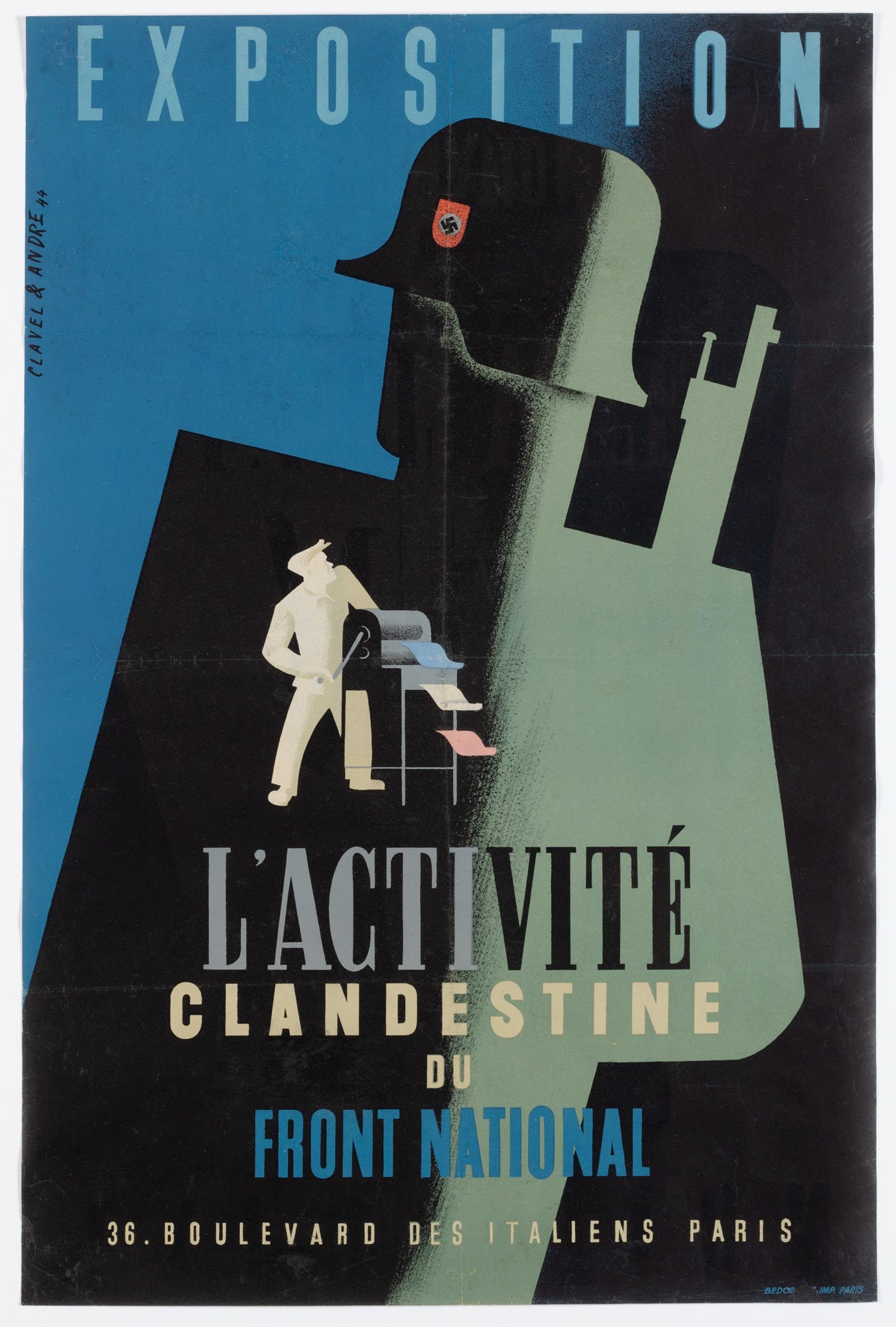A small figure in a worker’s cap looks furtively over his shoulder as he cranks a mimeograph. He represents the heroic efforts of the underground National Front party in its resistance against the Nazis. A stylized German soldier, red swastika vivid against his dark helmet, dwarfs the worker, recalling a David and Goliath–type relationship. The overlaid text refers to a public “exposition” that would reveal the critical role of the National Front in rebuilding postwar France. A divided blue/black background encodes the nightmarish experience of the occupation: deceptive calm by day and arrests and torture at night. The large font of the word “activity” emphasizes the significance of action, while the colors of the typeface signal that it occurs in the shadows. The shared white coloring of the worker and the word “clandestine” reinforces this impression. Blue, white, and red leaflets from the mimeograph indicate that the worker’s actions are patriotic. The National Front’s name itself can also be seen as a piece of propaganda: “Front” denotes a widespread grassroots movement of resistance rather than one specific group; and “National” emphasizes the movement’s patriotic, non-ideological character, since National Front organizations, while led by Communists, were open to all and focused on defeating the Nazis.
